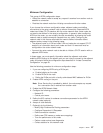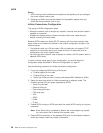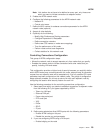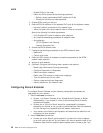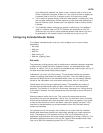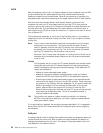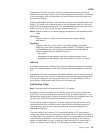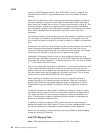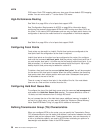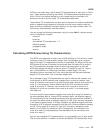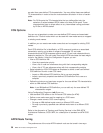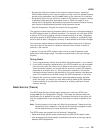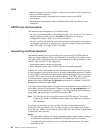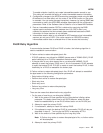memory, and APPN shared memory. See “APPN Node Tuning” on page 38 for a
discussion of the APPN tuning parameters which control the amount of shared
memory.
Recall from the discussion under the set node prompt that configured routing lists
are never modified by operational code. When the extended border node uses a
given routing list it copies the next hop CP names into a temporary routing list. This
temporary dynamic routing list is augmented with dynamic entries as allowed by
your configuration setting of the list dynamics parameter. This temporary list is short
lived, and is discarded once the destination resource is found or the list is
exhausted.
The
routing list name
is the first prompt you see when adding or modifying a routing
list. This name is not used by the operational code at all. It’s purpose is to allow
you to identify a specific routing list if you want to modify it or delete it at some later
time.
Subnetwork visit count
and
list optimization
are the next two prompts, and follow the
same concept as the analogous parameters defined at the node level. A new
routing list initializes these values with the current node level settings. You change
these values for individual routing lists as your requirements dictate.
Destination LU
prompt(s) are next. Here you may configure at least one, and
optionally more, destination resources. Any of the FQLU names may be prematurely
terminated with a trailing wildcard “*” to identify a group of LUs. You may not imbed
a “*” in the middle of an FQLU name.
One of your routing lists may specify a standalone “*” as one of the destination LUs.
If this is done then that routing list is known as the
default routing list
, and this
default routing list will be used by the extended border node for all destination LUs
that don’t better match the LUs specified in the other routing lists. This list is also
used to find LUs when INAUTHENTIC NETID is indicated.
When modifying an existing routing list with many LU names the process of
stepping through the LU names could be quite tedious. There are a number of
shortcut keys defined to help speed stepping through an existing list of names.
Those shortcut keys are defined in the section with the configuration command
detail.
Routing CP
prompt(s) are the last part of entering a routing list. Here you supply
the names of one or more CPs that may know how to reach the configured list of
LUs. Along with each CP name you may configure an optional subnetwork visit
count. This allows you to specify a different maximum number of subnetworks a
session may traverse for different CPs.
In addition to explicitly configuring FQCP names there are a couple keywords
defined that equate to the local node’s CP name, all native extended border nodes,
etc. See the section with configuration command detail for those keywords.
As with the LU name list, the same shortcut keys are available to speed stepping
through an existing CP name list.
Add COS Mapping Table
Note: COS mapping tables are not supported for 2210 12x models.
APPN
34
MRS V3.2 Protocol Config Ref Vol 2




